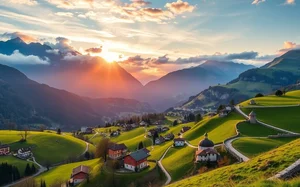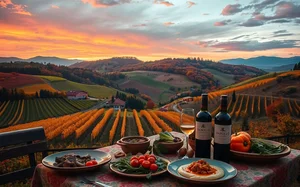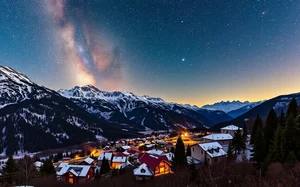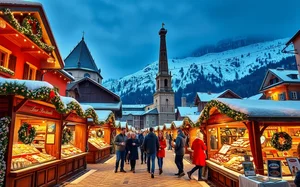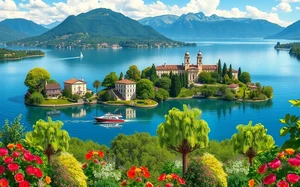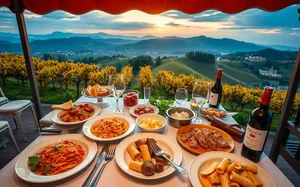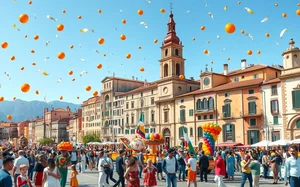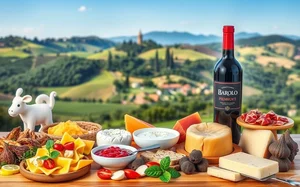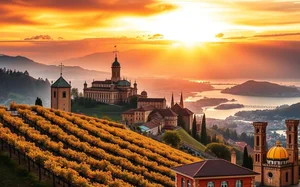Book your experience
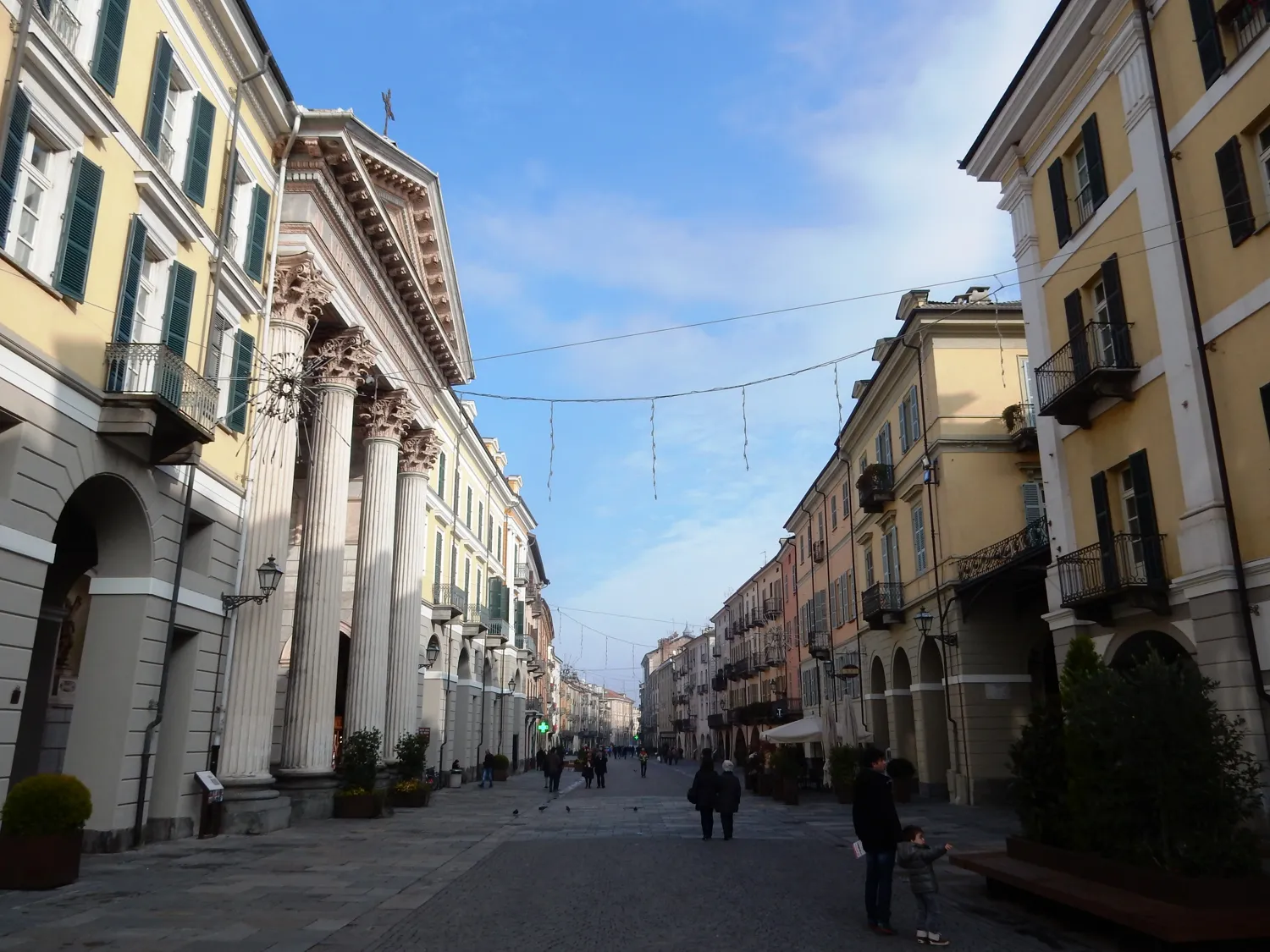 copyright@wikipedia
copyright@wikipedia“True beauty is found in the details, in the little things that we often overlook.” This statement by a well-known Italian writer resonates perfectly when talking about Cuneo, a gem set between the Alps and the Piedmontese plains. This fascinating corner of Italy, often overlooked by tourists in search of more famous destinations, offers a unique mix of history, culture and nature that deserves to be explored.
In this article, we will delve into the wonders of Cuneo, starting with the discovery of hidden beauties, where panoramic views and picturesque corners tell forgotten stories. There will be a gastronomic itinerary that will take us to taste the authentic flavors of local cuisine, from delicious cheeses to traditional desserts. Plus, we’ll take a look at the unmissable events that animate the city’s cultural calendar, an opportunity to immerse yourself in vibrant community life. Finally, we will move away from the beaten path to explore the Underground Cuneo, a fascinating journey through mysteries and legends.
In an era in which the search for authentic and sustainable experiences has become a priority for many travellers, Cuneo presents itself as an ideal destination. Its ability to combine tradition and modernity makes it a place where every visitor can find something special, whether it is a typical dish, a cultural event or a walk in the countryside.
Get ready to discover a world of surprises: Cuneo awaits you with its stories, its flavors and its timeless beauty. Let’s begin this journey together, exploring the treasures this fascinating city has to offer.
Discovery of the hidden beauties of Cuneo
A personal experience
The first time I visited Cuneo, I got lost among the picturesque streets of the historic center. It was a chance meeting with a small shop of local artisans that made me discover the authenticity of this city. The freshness of the mountain air, mixed with the scent of freshly baked bread, made that moment unforgettable.
Practical information
Cuneo is easily reachable by train from Turin, with a journey that takes about an hour. Trains leave regularly from Porta Nuova station. Once in the city, the Historic Center can be explored on foot, and many of the wonders are free. Don’t miss Piazza Galimberti, the beating heart of the city, and the Covered Market, open from Tuesday to Saturday.
Insider tip
A tip that few people know is to visit the Garden of Wonders, a hidden park that is home to rare plants and a breathtaking view of the Alps. It is a corner of tranquility, perfect for a meditative break.
Cultural impact
Cuneo, with its historic architecture and artisan tradition, reflects a rich cultural heritage that has influenced its community over the centuries. This connection with local roots is palpable and makes each visit unique.
Sustainable tourism
Visitors can contribute to the local community by choosing to eat in 0km restaurants and purchasing artisanal products in the markets. This way, you not only support the local economy, but you have an authentic experience.
Final reflection
In light of these experiences, do you ever wonder how many wonders there are still to discover in places that we often take for granted? Cuneo is an invitation to explore, to be surprised and to immerse yourself in an atmosphere that speaks of history and authenticity.
Gastronomic itinerary: taste the local cuisine
A memorable experience
I remember the first time I tasted hazelnut cake in a small restaurant in Cuneo. The intense flavor of the hazelnuts, mixed with the dark chocolate, seemed to tell the story of this land. Every bite was a journey through the green hills and scents of a Piedmont rich in culinary traditions.
Practical information
Explore Cuneo through a gastronomic itinerary that includes key stops such as the Piazza Vittorio Emanuele II Market, where every Tuesday and Friday you can find fresh, local products. The stalls offer a variety of specialties, from cured meats to cheeses, ideal for tasting. The market hours are from 8:00 to 13:00. Don’t forget to enjoy a glass of Barolo, which you can find in several wine bars in the city.
An exclusive tip
If you want an authentic experience, book a cooking class with a local chef. Not only will you learn to prepare traditional dishes, but you will also have the opportunity to discover tricks and secrets that only the residents know.
Cultural impact
Gastronomy in Cuneo is not only a pleasure for the palate, but reflects the culture and history of the region. The dishes tell of a community that values local products and traditions, helping to create a deep bond between the people of Cuneo and their land.
Sustainability
Choosing to eat in restaurants that use 0 km ingredients not only supports the local economy, but also reduces the environmental impact.
A personal reflection
What do you expect to discover on your gastronomic trip to Cuneo? Each dish has a story to tell and a flavor to share.
Unmissable events: Cuneo’s cultural calendar
An experience that will leave you breathless
I remember the first time I attended the White Truffle Fair, an event that transforms Cuneo into a stage of flavors and traditions. The streets fill with intoxicating aromas and people gather to celebrate one of Piedmont’s culinary gems. This is just one of the many events that make Cuneo a lively and fascinating cultural destination.
Practical information
Cuneo offers a calendar full of events, from concerts to food festivals and artistic events. To stay updated, I recommend you visit the official website of the municipality of Cuneo or the Facebook page of the Tourist Association. The main events, such as the Festa della Madonna del Rosario in October, are free, while some concerts may require a ticket ranging from 5 to 20 euros. Reaching Cuneo is simple: you can arrive by train from Turin or by car along the A6.
An insider tip
If you want to live a unique experience, take part in the Music Festival in June. The streets come alive with street artists and improvised concerts, making the atmosphere magical and engaging.
Cultural impact
Cuneo is a city that boasts a rich history and a strong sense of community. The events not only celebrate local traditions, but bring people together, creating a strong bond between residents and visitors.
Sustainability and community
Many events encourage eco-friendly practices, such as the use of recyclable materials and promotions for local products. Participating in these events also means supporting the local economy.
A personal touch
As a local elder said: “Cuneo is alive when there are events; that’s when we can share our history and our passion.”
Have you ever thought about how a simple festival can reveal the soul of a city?
Panoramic walks in natural parks
An unforgettable experience
I remember my first encounter with the Maritime Alps Natural Park, where I walked along flower-lined paths, surrounded by pine trees and mountain peaks. The scent of fresh air, mixed with the singing of birds, created a magical atmosphere. This corner of Piedmont is an invitation to explore hidden beauties, far from mass tourism.
Practical information
The park is easily reachable by car from Cuneo, with a journey of approximately 30 minutes. The main paths are signposted and suitable for everyone, with free entry. I recommend you visit the Visitor Center in Entracque, where you can get detailed maps and practical advice. Hours vary, but it is generally open from 9am to 5pm.
An insider tip
Don’t miss the path that leads to Lake Valderia, a lesser-known but incredibly evocative place, perfect for a picnic break with a view.
The impact of the park
These natural spaces not only offer refuge to a rich and varied fauna, but also represent an important cultural and social resource for the local community, which promotes ecological activities and environmental education.
Sustainable tourism practices
During your visit, remember to respect the environment by following the park rules and using marked paths. You can also participate in cleaning days organized by residents.
Seasonality
Each season offers a different experience: in spring, wildflowers color the landscape; in winter, the snow-capped peaks create a dream panorama.
“The mountain is my home, and every step here is a gift,” says Marco, a resident of Entracque.
Final reflection
Have you ever wondered how a simple path can transform into an inner journey? Cuneo and its natural parks invite you to discover it.
Discovering local art: museums and galleries
A personal experience
I still remember the first time I crossed the threshold of the Cuneo Civic Gallery. The walls were adorned with works by local artists, and the smell of fresh paint hung in the air. I felt like I had opened a window into a world of vibrant and authentic creativity, far from the beaten tourist track.
Practical information
Cuneo offers a variety of museums and galleries, including the Natural History Museum and the Ceramics Museum, both within easy walking distance of the centre. Opening hours vary, but are generally open from Tuesday to Sunday, with entrance fees ranging between 3 and 5 euros. For updated information, consult the official website of the Municipality of Cuneo.
An insider tip
If you are a lover of contemporary art, don’t miss the opening events of the temporary exhibitions. Often, artists are present and available to discuss their works, a rare opportunity to connect directly with the local art community.
Cultural impact
Art in Cuneo is not just a pastime, but a reflection of its history and its people. The works on display tell stories of resilience, innovation and tradition, contributing to a unique cultural identity.
Sustainability
Visiting local galleries and museums is a sustainable tourism practice: you support local artists and communities, contributing positively to the economy.
Suggestion
I recommend you take part in a ceramic workshop at the Ceramics Museum. Not only will you create your own work of art, but you will also have an authentic and tangible experience of the local culture.
Final reflection
As a local artist said: “Art is a journey that unites us.” What is your personal artistic discovery in a new city?
Underground Wedge: Explore hidden secrets
A journey into the dark
I still remember the first time I set foot in the depths of Cuneo. The echo of our footsteps mixed with the whisper of history as we entered the hidden tunnels that once served as shelter and storage. These underground passages, part of the city’s historical heritage, reveal a fascinating and often overlooked world.
Practical information
To explore Cuneo underground, I recommend you visit the Civic Museum of Cuneo, where you can book a guided tour. Visits take place every Saturday and Sunday, starting from 10:00 and 15:00. The cost is approximately €10 per person. You can easily reach the museum on foot from the center, taking advantage of the wonderful urban landscape.
An insider tip
If you want a truly unique experience, ask your guide to show you the “Ghost Corridor”. This secret passage, known only to older inhabitants, tells stories of historical events and local legends.
A cultural treasure
These tunnels are not just a tourist attraction; they are a testimony to the resilience and creativity of the Cuneo people. During wars, citizens took refuge here, keeping their culture alive despite adversity.
Sustainability and community
By visiting Cuneo underground, you contribute to preserving the local heritage. Revenue from visits helps restore and maintain these historic spaces.
“Every time we go down the tunnels, we rediscover something new,” an elderly resident told me, his eyes shining with nostalgia.
A reflection
Cuneo sotterranea is a journey through time that invites us to reflect on how little we know about the stories that surround us. What secrets does your city keep?
Responsible tourism: eco-sustainable experiences in Cuneo
A personal experience
I vividly remember the day I decided to explore Cuneo by bicycle. Cycling among the hills and vineyards, I discovered not only breathtaking landscapes, but also a way of traveling that respects the environment. It was at that moment that I understood the importance of responsible tourism, an aspect often overlooked by visitors.
Practical information
Cuneo offers numerous opportunities for eco-sustainable tourism. You can rent a bicycle at Cuneo Bike Sharing, active all year round, with rates starting from €2 per hour. To reach the city, the train is an eco-friendly and convenient choice, with frequent connections from Turin.
An insider tip
An unmissable experience is the Earth Market held every Saturday in Piazza Galimberti, where you can buy zero km products directly from local producers. Here, direct contact with farmers is a way to understand the value of sustainable practices and biodiversity.
Cultural impact
Responsible tourism not only preserves the environment, but also supports the local economy. This approach has a positive impact on the community, helping to keep culinary and artisanal traditions alive.
A local opinion
As a friend from Cuneo told me: “Our city is a treasure to be discovered, but it is essential to do so with respect.”
A final reflection
Cuneo offers a journey that goes beyond simple tourism, inviting us to reflect on how we can explore the world without damaging it. Have you ever wondered how the way you travel can make a difference?
The lesser-known story: Cuneo during the Risorgimento
A personal discovery
I vividly remember my first encounter with Cuneo, while walking through the cobbled streets of the centre. I came across a small museum dedicated to the Risorgimento, where a local elder told me fascinating stories about the patriots who fought for the unification of Italy. His eyes shone with pride as he described how Cuneo had been a stronghold for liberal movements.
Practical information
For those who want to explore this part of history, the Cuneo Civic Museum is an excellent starting point. It is open from Tuesday to Sunday, with an entrance fee of around 5 euros. It is easily found in Piazza Galimberti, a few steps from the train station.
An insider tip
Don’t miss the opportunity to visit the War Memorial, located in a quiet park. Here, you can immerse yourself in the historical atmosphere and reflect on the sacrifice of those who fought for freedom.
The cultural impact
Cuneo, during the Risorgimento, saw fervent political activism that shaped the community. Its streets, now full of cafes and shops, were once the scene of demonstrations and clandestine meetings.
Sustainable experiences
You can contribute to the local community by participating in guided tours that promote history in an eco-sustainable way. Many tours are led by passionate residents and adhere to environmentally conscious practices.
An unforgettable experience
For a unique experience, try to attend a local commemorative event in May, where citizens reenact historic battles with traditional song and dance.
Final reflection
Cuneo is much more than just a tourist stop; it is a place that lives and breathes history. What is your favorite story about the Risorgimento?
Local markets: experience the authenticity of the area
An unforgettable market experience
I still remember the first time I visited the Cuneo market, a riot of colors and scents that seemed to tell stories of generations. The buzz of conversations, the smell of fresh bread and the sound of bells announcing the opening of the stalls create a lively and welcoming atmosphere. Every Saturday, the Cuneo Market comes alive in the historic center, from 8:00 to 13:00, offering fresh and authentic products from the region.
Practical information
- Where: Piazza Vittorio Emanuele II, Cuneo
- Times: Every Saturday from 8:00 to 13:00
- Prices: Variable depending on the products; seasonal fruit and vegetables are particularly accessible.
An insider tip
Don’t forget to taste tortelli di Cuneo from one of the local stalls. This typical dish, filled with potatoes and fresh ingredients, is a true gastronomic treasure that you won’t easily find in restaurants.
Cultural impact
Local markets are not just places of purchase, but represent the beating heart of Cuneo culture, where the elderly tell stories of the past and the young learn the importance of the agricultural tradition. These markets are fundamental for maintaining local agricultural practices and supporting the local economy.
Sustainable tourism
Buying directly from producers not only allows you to taste the authenticity of the area, but also supports the local economy. It is a way to contribute to responsible tourism, promoting sustainability.
A reflection
Have you ever thought about how significant a simple purchase at a local market can be? Next time you visit Cuneo, stop to explore and interact with the vendors; you might discover a piece of history you didn’t expect.
Exclusive tip: visit the village of Valdieri
An unforgettable experience
I still remember the first time I set foot in Valdieri, an enchanting village a few kilometers from Cuneo. The sunlight filtered through the branches of the trees, while the scent of the fresh mountain air mixed with that of the wildflowers. Valdieri is a hidden treasure, often overlooked by tourists. To reach it, just take the bus from Cuneo (line 16), which offers a scenic journey of around 30 minutes. The ticket costs only 2.50 euros.
An insider tip
If you want an authentic experience, visit the Mountain Museum, where you can discover local history and Alpine traditions. Don’t forget to ask the residents where to find the best priest’s morsel, a typical local dessert!
A cultural impact
Valdieri is not just a place to visit; it is an example of how local communities keep their traditions alive. Here, sustainable tourism is a priority: many residents offer locally sourced accommodation and food, helping to preserve the environment.
Seasons and natural beauty
Each season gives a different face to Valdieri; in spring, the flowering meadows create an idyllic picture, while in winter the snow-covered landscape transforms into a paradise for ski lovers.
“Here nature is our life,” says Marco, a local. His passion is contagious.
A final reflection
Have you ever wondered how a small village can tell stories of resilience and beauty? Valdieri is the answer, a place where the past and the present intertwine in a harmonious embrace.


 Architecture and Design
Architecture and Design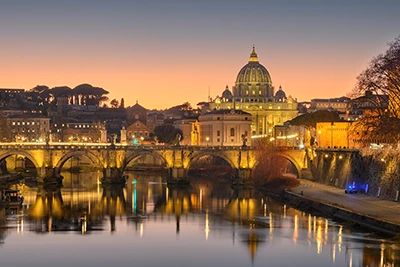 Cities and Regions
Cities and Regions Culture and History
Culture and History Events and Festivals
Events and Festivals Fashion and Shopping
Fashion and Shopping Food and Wine
Food and Wine Nature and Adventure
Nature and Adventure Unique Experiences
Unique Experiences